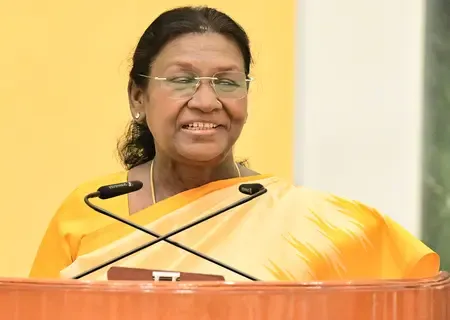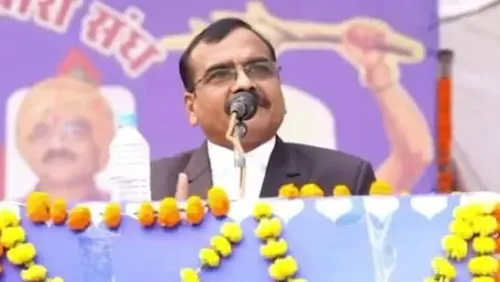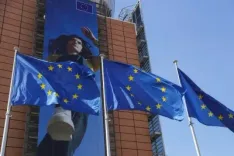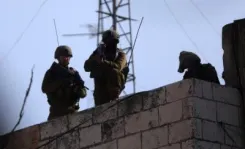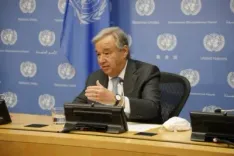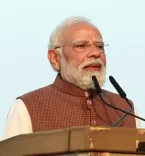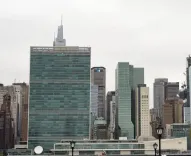How Will Navi Mumbai Airport Enhance Regional Connectivity?
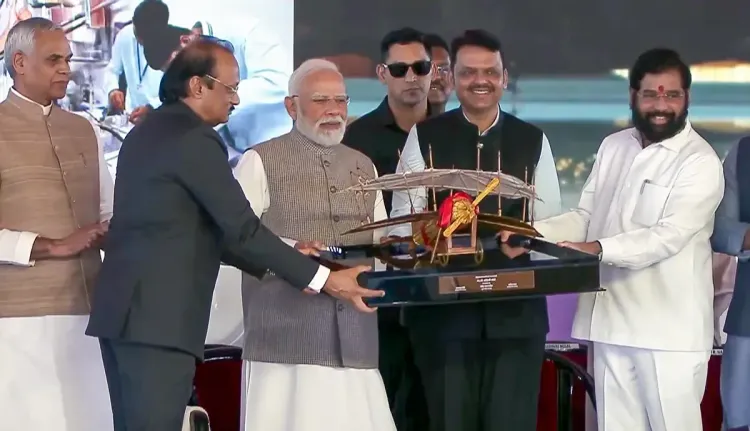
Synopsis
Key Takeaways
- Navi Mumbai International Airport is a major step towards enhancing connectivity.
- Farmers will benefit from access to international markets.
- The UDAN Yojana is making air travel affordable.
- India aims to be a global MRO hub by 2030.
- Mumbai Metro Line 3 will improve urban transport.
Navi Mumbai, Oct 8 (NationPress) Prime Minister Narendra Modi stated on Wednesday that the Navi Mumbai International Airport represents a significant step towards Viksit Bharat.
“This airport is constructed on the land of Chhatrapati Shivaji Maharaj and is designed in the shape of a lotus flower. The new airport is anticipated to be crucial in enhancing both regional and global connectivity,” PM Modi remarked during the inauguration ceremony for the first phase of the Navi Mumbai International Airport (NMIA).
He highlighted that Mumbai has now welcomed its second international airport, which marks a notable achievement in its quest to become Asia's leading connectivity hub.
“With this new airport, farmers in Maharashtra will gain access to markets in Europe and the Middle East,” he added.
PM Modi emphasized that the NMIA will alleviate congestion at Chhatrapati Shivaji Maharaj International Airport and will significantly boost India’s aviation capacity, thereby revolutionizing travel and connectivity in Mumbai and establishing the city as a global center for growth and opportunity.
The Prime Minister remarked that the development of airports in smaller towns has provided residents with more air travel options.
“To make air travel affordable, the UDAN Yojana was launched. Over the past ten years, countless individuals have experienced air travel for the first time due to these initiatives. New airports and the UDAN Yojana have simplified air travel, making India the world’s third-largest domestic aviation market,” he mentioned.
He noted that millions have realized their dream of flying thanks to the UDAN scheme over the past decade.
“In 2014, when I was given the opportunity to lead, I expressed my vision that even those in slippers should have the chance to fly. Our government has committed to this mission, and in the last eleven years, we have constructed airports across the nation,” the Prime Minister stated.
He pointed out that prior to 2014, there were only 74 airports in India, and the current number has surpassed 160.
PM Modi noted that the government’s goal is to establish India as a global aviation Maintenance, Repair, and Overhaul (MRO) hub by the end of this decade.
Additionally, he inaugurated the first fully underground metro system, Mumbai Metro Line 3, describing it as a transformative project that will significantly ease travel and save valuable time for commuters.
PM Modi indicated that this cutting-edge metro system represents a proud symbol of India’s progress and commitment to modern infrastructure.
“With the opening of NMIA, the Mumbai Metropolitan Region will gain its second major international airport, enhancing commerce and connectivity. The final phase of Mumbai Metro Line-3 will also be inaugurated. We are dedicated to improving Mumbai's infrastructure and boosting the ‘Ease of Living’ for the residents of this dynamic city,” he affirmed.
PM Modi reiterated that the government’s primary focus is on uplifting the poor, middle class, and neo-middle class families.
“When these families receive essential amenities and are treated with dignity, their potential expands significantly. This, in turn, strengthens the nation as a whole,” he added.
Discussing GST 2.0, the Prime Minister noted that next-generation reforms have played a key role in lowering the prices of essential goods, thus boosting the purchasing power of the populace.
As per recent data, this year’s Navaratri sales have set new records, exceeding those of previous years.
“We have made substantial investments in various transportation modes to improve connectivity and accessibility. Landmark projects such as Atal Setu and Coastal Roads have been completed. Additionally, we are integrating multiple transport modes to ensure a seamless and efficient travel experience for our citizens,” he concluded.


